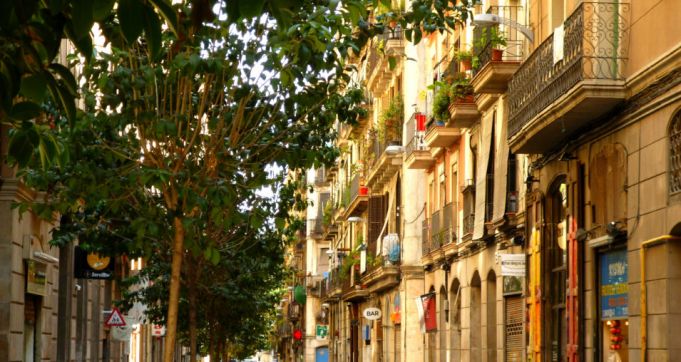Ciutat Vella El Raval district
On the other side of Las Ramblas lies the historical and popular quarter of El Raval.
Since the Olympics, a lot of private and local government money has been invested to clean up this notorious part of Barcelona, once home to the citys colourful low-life however a few rather seedy and unsafe areas, like the Barrio Chino, remain.
As well as building renovation, improvements include the opening up of broad avenues which now run through the centre of the neighbourhood. Home to a large immigrant population, El Raval has been described as the worlds most ethnically diverse urban space and the district offers a range of Indian, Arab, Moroccan, Chinese and Pakistani restaurants, among others.
There are around 2,000 shops, most of them traditional family-run businesses, with the various streets given over to specific trades the Carrer Tallers for music, second-hand goods on Carrer Riera Baixa, clothing and shoes on Carrer Nou de la Rambla and so on.
At the centre of this bustling quarter is La Boqueria, the best-known food market in Barcelona with the citys magnificent opera house, the Gran Teatre del Liceu, close by on Las Ramblas. Bus, underground and train lines provide efficient connections to the rest of the city. Antoni Gaudi, the famous Catalan Moderniste architect, built one of his first Art Nouveau creations here in El Raval, the Palau Guell.
In 1995, just a few blocks south of there, the Museum of Modern Art, MACBA, designed by Richard Meier, was constructed as part of the programme to renovate this somewhat down-at-heel part of town.
General Info
View on Map
Ciutat Vella El Raval district
El Raval, Barcelona, Spain







